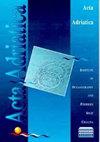桡足动物群落从北极到南极
IF 0.6
4区 生物学
Q3 MARINE & FRESHWATER BIOLOGY
引用次数: 0
摘要
在商业或旅游航行中使用公民科学和机会采样可以为广泛的生物地理区域海洋浮游生物群落的结构提供有价值的见解。为了利用公民科学方法研究小型浮游动物的分布和丰度,在S/V“克罗地亚燕鸥”号巡航期间(1994-1997年),在从北极到南极的33个站点收集了浮游生物样本,在上层上层上层使用了53µm网眼大小的Nansen网的垂直拖。在这项研究中,我们总结了浮游桡足类个体发生阶段(无节幼体、桡足类、成体)和无节幼体后组合(甲壳纲、卵足纲、盘尾纲、叉足纲、Corycaids)的分布模式,并报告了无节幼体与无节幼体的数量比,这是桡足类繁殖稳定性的重要指标。桡足类总丰度最高的是太平洋东北部和东南部,而最低的是地中海和南大洋。总的来说,桡足类群落以无节幼体阶段为主,而大多数无节幼体后组合(calanoids、oithonids和oncaeids)以桡足类为主。从空间上看,无节幼体和后无节幼体表现出相似的纬度模式,这两种组合在赤道两侧温带的高纬度地区占主导地位,而类珊瑚、盘尾类珊瑚和科珊瑚的贡献在低纬度地区增加。无节幼体与后无节幼体的比例从1.1到6.4不等,只有五个站的比例略小于1。从纬度上看,这一比率的中值从北极边缘的1.1到南太平洋的3.1不等,各地区之间没有统计学上的显著差异。无节幼体/无节幼体后比值的突然变化可能预示着桡足类群落的紊乱,前提是在不同生产力条件下确定所有海洋区域的平均值。本文章由计算机程序翻译,如有差异,请以英文原文为准。
Copepod community from Arctic to Antarctic
The use of citizen science and opportunity sampling during commercial or tourist voyages can provide valuable insights into the structuring of the marine plankton community in broad biogeographic areas. With the goal of studying the distribution and abundance of smaller zooplankton using citizen science approach, plankton samples were collected at 33 stations spanning from the Arctic to Antarctic during the cruise of the S/V “Croatian Tern” (1994-1997), using vertical tows with a 53µm mesh size Nansen net in the upper epipelagic layer. In this study, we summarize the observed distribution patterns of planktonic copepods by ontogenetic stages (nauplii, copepodites, adults) and by postnaupliar assemblages (calanoids, oithonids, oncaeids, harpacticoids, corycaeids), reporting also on the numerical ratio of nauplii to postnaupliar copepods, as an important indicator of the stability of copepod reproduction. The highest abundances of total copepods were found in the northeastern and southeastern Pacific, while the lowest values were found in the Mediterranean Sea and Southern Ocean. Overall, the copepod community was dominated by naupliar stages, while most postnaupliar assemblages (calanoids, oithonids, and oncaeids) were dominated by copepodites. Spatially, nauplii and postnaupliar oithonids showed similar latitudinal patterns, with both assemblages dominating in high latitudes of temperate zones on both sides of the equator, while contributions of calanoids, oncaeids, and corycaeids increased at lower latitudes. The ratio of nauplii to postnauplii varied from 1.1 to 6.4, and only at five stations was it slightly < 1. Latitudinally, the median values of this ratio varied from 1.1 in the marginal Arctic to 3.1 in the South Pacific, with no statistically significant differences among areas. The sudden change in nauplii/ postnauplii ratio could signal disturbances in the copepod community, provided that the average values are determined for all marine areas under different productivity conditions.
求助全文
通过发布文献求助,成功后即可免费获取论文全文。
去求助
来源期刊

Acta Adriatica
生物-海洋与淡水生物学
CiteScore
1.60
自引率
11.10%
发文量
13
审稿时长
>12 weeks
期刊介绍:
Journal "Acta Adriatica" is an Open Access journal. Users are allowed to read, download, copy, redistribute, print, search and link to material, and alter, transform, or build upon the material, or use them for any other lawful purpose as long as they attribute the source in an appropriate manner according to the CC BY licence.
 求助内容:
求助内容: 应助结果提醒方式:
应助结果提醒方式:


